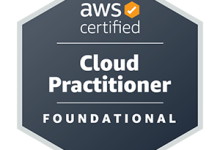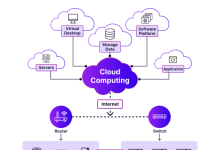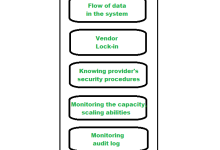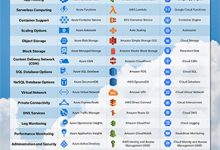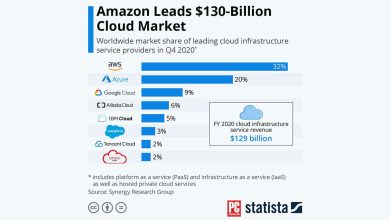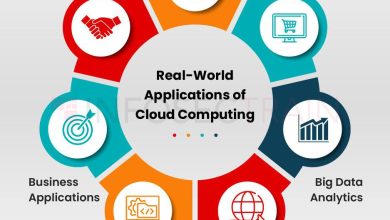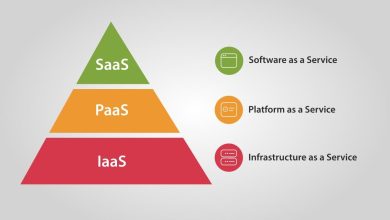cloud computing hybrid
Ads
Introduction
Cloud computing hybrid is a revolutionary technology that combines the benefits of both public and private clouds. By integrating these two types of clouds, organizations can leverage the scalability and cost-effectiveness of public clouds, while also enjoying the security and control offered by private clouds.
This article will delve deep into the world of cloud computing hybrid, exploring its strengths and weaknesses, and providing valuable insights on how businesses can harness its power to drive innovation and growth.
With the rapid advancement of technology, cloud computing hybrid has emerged as a game-changer in the IT industry, offering unprecedented flexibility and efficiency to organizations of all sizes.
In this article, we will discuss the key features of cloud computing hybrid, its benefits, challenges, and practical applications in the business world. By the end of this guide, you will have a comprehensive understanding of how cloud computing hybrid can transform your organization.
So, let’s dive in and explore the limitless possibilities of cloud computing hybrid together.
Strengths of Cloud Computing Hybrid
One of the main strengths of cloud computing hybrid is its versatility. Organizations can easily scale their operations up or down based on their needs, thanks to the seamless integration of public and private clouds.
Another strength of cloud computing hybrid is its cost-effectiveness. By using a combination of public and private clouds, businesses can optimize their IT spending and reduce operational costs significantly.
Security is also a key strength of cloud computing hybrid. Organizations can enjoy the enhanced security features of private clouds while harnessing the benefits of public clouds for increased productivity and collaboration.
Flexibility is another advantage of cloud computing hybrid. Organizations can choose the deployment model that best fits their requirements, whether it’s a public, private, or hybrid cloud setup.
Scalability is yet another strength of cloud computing hybrid. Organizations can easily expand their infrastructure to accommodate growing workloads, without the need for costly hardware upgrades.
Improved performance is also a key benefit of cloud computing hybrid. By leveraging the power of both public and private clouds, organizations can ensure optimal performance and responsiveness for their applications and services.
Lastly, cloud computing hybrid promotes innovation and agility. By enabling quick deployment of resources and services, organizations can adapt to changing market conditions and stay ahead of the competition.
Weaknesses of Cloud Computing Hybrid
Despite its many strengths, cloud computing hybrid also has its fair share of weaknesses. One of the main challenges is the complexity of managing a hybrid cloud environment, as it requires specialized skills and expertise.
Security concerns are another weakness of cloud computing hybrid. With data spread across public and private clouds, organizations must ensure rigorous security measures are in place to protect sensitive information.
Interoperability can also be a challenge with cloud computing hybrid. Integrating different cloud platforms and applications can sometimes lead to compatibility issues, impacting overall performance and efficiency.
Cost management is another weakness of cloud computing hybrid. Organizations must carefully monitor their IT spending to avoid overspending on cloud resources and services, which can lead to budget constraints.
Data governance and compliance are also areas of concern with cloud computing hybrid. Organizations must adhere to strict regulatory requirements and data protection laws when storing and processing data in hybrid cloud environments.
Performance issues can arise with cloud computing hybrid, especially when workloads are not optimized across public and private clouds. Organizations must constantly monitor and fine-tune their infrastructure to ensure optimal performance levels.
Vendor lock-in is another potential weakness of cloud computing hybrid. Organizations that rely on a single vendor for their cloud services may face challenges if they need to switch providers or migrate their data to a different platform.
Table: Complete Information about Cloud Computing Hybrid
| Aspect | Details |
|---|---|
| Definition | Combination of public and private clouds |
| Key Features | Versatility, cost-effectiveness, security, flexibility, scalability, performance, innovation |
| Main Strengths | Versatility, cost-effectiveness, security |
| Main Weaknesses | Complexity, security concerns, interoperability |
Frequently Asked Questions about Cloud Computing Hybrid
Q1: What is cloud computing hybrid?
Cloud computing hybrid is a technology that combines the features of public and private clouds to offer a hybrid solution for organizations.
Q2: What are the benefits of cloud computing hybrid?
The benefits of cloud computing hybrid include versatility, cost-effectiveness, security, flexibility, scalability, improved performance, and innovation.
Q3: What are the challenges of cloud computing hybrid?
Challenges of cloud computing hybrid include complexity, security concerns, interoperability, cost management, data governance, performance issues, and vendor lock-in.
Q4: How can organizations leverage cloud computing hybrid?
Organizations can leverage cloud computing hybrid by carefully planning their cloud strategy, optimizing their workloads, and ensuring data security and compliance.
Q5: What are some practical applications of cloud computing hybrid?
Practical applications of cloud computing hybrid include data storage and backup, disaster recovery, software development, testing, and deployment, and collaboration tools.
Q6: How can organizations address the weaknesses of cloud computing hybrid?
Organizations can address the weaknesses of cloud computing hybrid by investing in specialized skills and expertise, implementing robust security measures, optimizing their workloads, and monitoring their IT spending.
Q7: What is the future outlook for cloud computing hybrid?
The future outlook for cloud computing hybrid is promising, with more organizations adopting hybrid cloud solutions to achieve greater flexibility, efficiency, and innovation in their IT operations.
Conclusion
In conclusion, cloud computing hybrid is a powerful technology that offers the best of both worlds to organizations seeking to modernize their IT infrastructure and drive business growth. By harnessing the strengths of both public and private clouds, organizations can achieve optimal performance, scalability, and security in a cost-effective manner. Despite its challenges, cloud computing hybrid remains a valuable asset for businesses looking to stay ahead of the competition and adapt to the ever-changing digital landscape. It is essential for organizations to carefully evaluate their cloud strategy and leverage the capabilities of cloud computing hybrid to unlock new opportunities and achieve success in the digital era.
Take action today and explore the endless possibilities of cloud computing hybrid for your organization’s future success.
Disclaimer
The information provided in this article is for educational and informational purposes only. It should not be construed as professional advice or recommendations. The author is not responsible for any errors or omissions in the content and does not guarantee the accuracy or completeness of the information presented. Readers are advised to seek professional guidance and conduct their own research before making any decisions based on the information provided in this article.
